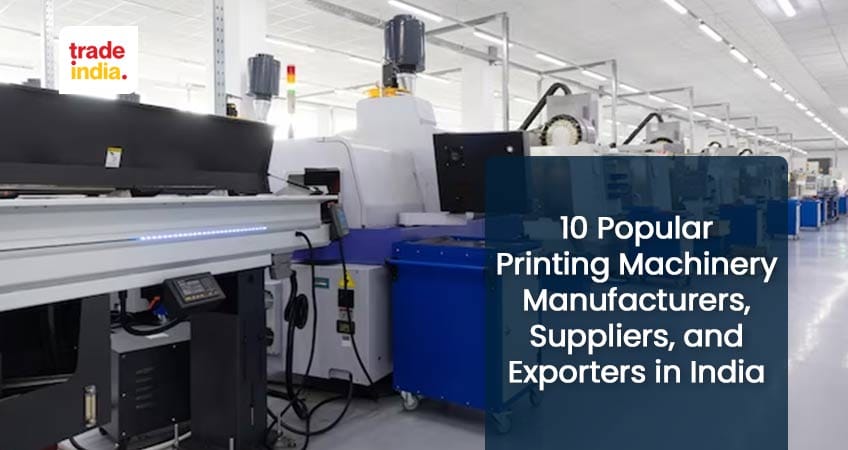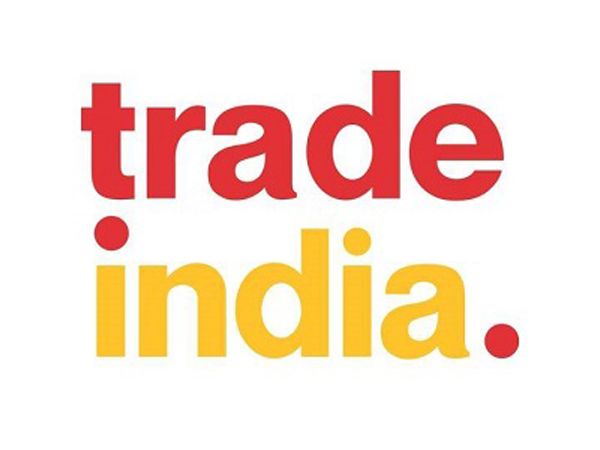Top 10 Printing Machinery Manufacturers, Suppliers, and Exporters in India

The brilliant British engineer and mathematician Charles Babbage developed the Difference Engine concept in the 19th century and made important advances in printing technology. Although Babbage is widely recognized for his contributions to the computer science industry, he also played a key role in developing the first mechanical printer. This blog will discuss the contributions of Charles Babbage and list the top 10 Printing Machinery Manufacturers in India.
The Printing Revolution
Charles Babbage, commonly called the Father of the Computer, was interested in more than just calculating machines. He also wanted to see other data-processing activities automated. To go along with his projected analytical engine, Babbage created the first mechanical printer. This innovation paved the way for printers and their interaction with computers to advance. The development of printing technology has resulted in various printer models and features. Printing has come a long way since the days of mechanical striking to transfer ink to paper. Digital printers use sophisticated inkjet and laser technology. In short, Babbage's original plans laid the groundwork for the ongoing improvement of this crucial tool.
Top 10 Best Printer Manufacturing Companies in India
The below list is selected because of its Printing Machinery Price, design, functionality, and more:
1. Canon India Pvt. Ltd.
Canon is a leading brand in the Japanese technology industry. Positive user reviews have been given to several Canon inkjet models. Its sales and marketing arm is a leader in imaging technology worldwide. Canon India Pvt. Ltd., established in 1997, is an Indian retailer of high-end digital imaging products and services. Its extensive product line includes large format and digital production printers, managed document services, commercial printers, laser and inkjet printers, check and document scanners, etc., all supported by Canon's corporate motto, "Delighting You Always."
2. Brother International India Pvt. Ltd.
Brother International (India) Pvt. Ltd. ranks tops among the Printing Machinery Suppliers in India. The company has a unified marketing, sales, and customer service team. It began as a small corporation 100 years ago but has now expanded into a global powerhouse. The company was formed in 1908, and ever since then, it has been dedicated to providing clients with high-quality products at affordable costs, specifically printers.
3. Epson India Pvt. Ltd.
Epson printers are noted for their innovative features and quick updates. Epson, an Indian corporation, was created in 1990, and it has since become a dominant force in the Indian digital printing and imaging industries. Its products have enhanced the lives of millions of Indians.
4. Colorject Group
ColorJet is India's leading Printing Machinery Dealers in India. The Colorjet Group has been successful since its inception in 1995 because of the 1500+ senior person-years of experience its staff has in digital printing technology. Located in the Uttar Pradesh city of Noida, ColorJet can gain insight into the needs of its customers' businesses and develop solutions that meet those needs. There are 4000+ Colorjet 3D printers worldwide, solidifying its leadership position in the wide-format digital printing market.
5. Jet Inks Pvt. Ltd.
Jet Inks Private Limited was established in 2002. In 2007 it began manufacturing ink in India. Chennai-based Barrla Group Companies is the corporate umbrella under which CIJ Industries operates. The company uses highly trained plant maintenance and production staff in its ink-making factory on the outskirts of Chennai. It holds a top position among Printing Machinery Manufacturers.
6. HP India Pvt. Ltd.
HP India Pvt. Ltd. has faith in its 80 years of actions as proof that it will lead to a society where invention drives tremendous contributions to humanity. Its humble beginnings may be traced back to 1997 in Bangalore, India. Leaders give out bonuses not based on grades but on employees' independent decision-making and the HR department's support. In 2016, 97% of workers received constructive criticism of their work.
7. Samsung
The modern ML-2161, M2876, and XIP laser printers are just a few of the new printers available from Samsung. As a multinational corporation, it is committed to enforcing a strict global code of conduct for all employees and complying with all applicable laws and regulations worldwide. Its Printing Machinery Price range is affordable. Maintaining credibility with its various stakeholder groups and adapting quickly to shifts in the global business climate are goals of ethical management.
8. Panasonic
Panasonic plans to use India as a regional hub to expand into the rapidly expanding markets of Asia, Western Europe, and the Middle East. The company hopes to establish a foundation of expertise in India that can be exported to other emerging regions where customers are located. Panasonic has been doing business in India since 1972. It stocks a large variety of high-quality printers.
9. Konica Minolta
Konica Minolta has a long track record of releasing high-tech printers for home and office use. The company is considered the best Printing Machinery Suppliers in the market. The Konica Minolta Bizhub C220 Multifunctional Photocopier, the Konica Minolta Accuriopress C3080 Colour Multifunction Printer for the Office, and the Konica Minolta All-in-One Laser Printer are some of the most widely used printers.
10. Xerox
Xerox India, headquartered in Gurgaon, is the Indian branch of the American photocopier and printer manufacturer Xerox Corporation. Dr. Bhupendra Kumar Modi, also known as Dr. M., and Rank Xerox formed the joint venture Modi Xerox in September 1983.
FAQs: Printing machinery
Q: What is printing machinery, and what are its main functions?
Ans. The term printing machinery describes the numerous machines and tools utilized in the printing business to make copies of text, graphics, and images on various substrates. It covers various devices, including copiers, presses, and printers. The primary roles of printing machines are:
Printing machinery is often used to make an exact copy of a document, picture, or design on a given substrate. It makes printing large quantities of materials like brochures, books, labels, packages, and advertisements possible.
Offset lithography, flexography, digital printing, screen printing, and gravure printing are only a few printing methods used by modern printing machines. Each method has advantages in print speed, quality, and versatility.
Printing Machinery Manufacturers makes personalization possible by accommodating changeable data like names, addresses, and photos. It is an especially helpful function for product labelling, packaging, and direct mail.
Printing in huge quantities is done quickly, efficiently, and affordably thanks to modern industrial printing machinery.
Some printing machines include finishing procedures such as binding, cutting, coating, and laminating to improve the look and longevity of the printed result.
In short, printing machinery is crucial for the efficient and adaptable reproduction of printed materials that industries, enterprises, and individuals need.
Q. What are the different types of printing machinery available?
Ans. There are several varieties of printing machinery, each optimized for a distinct printing process or product. Here are some typical examples:
Using a series of rollers of ink and plates, offset printing presses transfer an image from a rubber blanket to the printing surface. Its Printing Machinery Price range is affordable.
Digital printers are plate-less printers that use digital files to print directly onto a substrate. Examples of digital printing machines include laser and inkjet printers.
Printing on packaging materials, including labels, plastic films, and corrugated cardboard, is made possible by flexographic presses, which use flexible relief plates and quick-drying inks.
Ink is transferred to the printing surface via etched plates or cylinders in gravure presses. Magazines, catalogues, and packaging are only some of the mass-produced products that benefit from their use.
Screen printing machines transfer ink to a surface through a squeegee and a mesh screen.
3D printers produce 3D objects by depositing material in successive layers. The industrial, prototyping, and medical fields are just a few of the many fields that put them to use.
These are just a few examples of the various printing machines available, each tailored to a particular printing process or production specifications.
Q. What are the typical printing speeds and resolutions offered by printing machinery?
Ans. Depending on the Printing Machinery Suppliers and the model, printing machinery may offer a wide range of print rates and resolutions. Here's a summary:
Speeds of 5,000–20,000 sheets per hour and resolutions of 300–600 dots per inch (DPI) are common in offset printing.
Digital printing speeds vary greatly between different models and technologies. Speeds of 30–200 pages per minute are possible with modern inkjet printers. In contrast, high-volume digital presses may print 500 pages per minute or more. The standard resolution ranges from 600 to 2400 DPI.
Flexographic printing can be done at speeds between 200 and 2000 feet per minute, depending on the intricacy of the press and design. The standard range for resolutions is between 100 and 1200 DPI.
Some gravure printing presses can print at speeds of up to 60,000 feet/minute. Typically, resolutions can be found between 300 and 1200 DPI, as experienced Printing Machinery Dealers in India suggested.
Screen printing speeds are highly variable, depending on the operator's expertise and the design's complexity. Resolutions range from 72 to 300 DPI, lower than customers would get with most other printing processes.
Remember that the precise speeds and resolutions users get will depend on the printer, materials, and conditions they print.
Q. Can printing machinery be integrated into automated or computerized printing systems?
Ans. Automated or digital printing systems can include printing machines. Computer-to-Press (CTP) and Computer-to-Plate (CTP) technology refer to this coupling of computers and printing presses. By bypassing conventional prepress procedures like filming and plate-making, digital data can be used to control the printing process directly.
Hardware and software components work together in automated printing systems to expedite printing. These systems ' capabilities include automated plate loading, work scheduling, colour management, data interchange, and quality control. Their end goal is to boost production while decreasing the need for human intervention.
Digital printers, cutting machines, inkjet heads, and finishing equipment may all be seamlessly integrated into a single production line thanks to the capabilities of today's computerized printing systems. Overall, print quality is improved, and productivity is raised when printing machinery is integrated into automated or computerized systems.
Conclusion
Customers are researching which digital printer is ideal for home and workplace use. In that situation, we suggest looking into the best Printing Machinery Dealers in India we have included in the list below. The two most popular brands, Epson and Canon, are excellent options.
Explore More:
